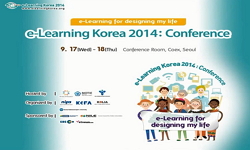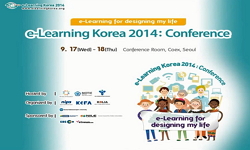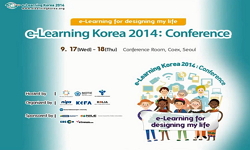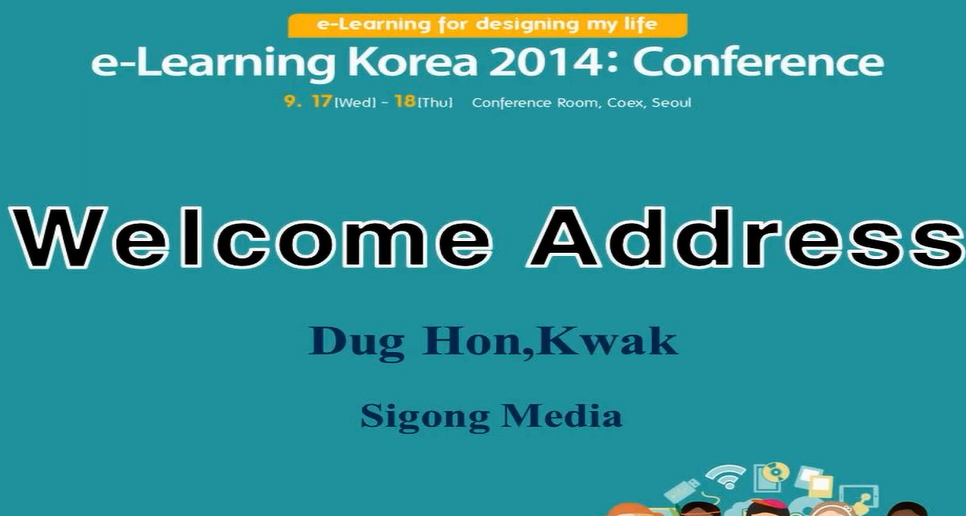In an era of educational paradigm shifts, adoption of e-learning has been a significant phenomenon in South Korea. This study examines characteristics of instructor, teaching materials, perceived mobility, and perceived connectedness as key independen...
http://chineseinput.net/에서 pinyin(병음)방식으로 중국어를 변환할 수 있습니다.
변환된 중국어를 복사하여 사용하시면 됩니다.
- 中文 을 입력하시려면 zhongwen을 입력하시고 space를누르시면됩니다.
- 北京 을 입력하시려면 beijing을 입력하시고 space를 누르시면 됩니다.



Understanding the adoption of e‐learning in South Korea:Using the extended Technology Acceptance Model approach
한글로보기https://www.riss.kr/link?id=A105989379
- 저자
- 발행기관
- 학술지명
- 권호사항
-
발행연도
2018
-
작성언어
English
- 주제어
-
등재정보
KCI등재,SCOPUS,SSCI
-
자료형태
학술저널
-
수록면
165-183(19쪽)
-
KCI 피인용횟수
2
- DOI식별코드
- 제공처
-
0
상세조회 -
0
다운로드
부가정보
다국어 초록 (Multilingual Abstract)
In an era of educational paradigm shifts, adoption of e-learning has been a significant phenomenon in South Korea. This study examines characteristics of instructor, teaching materials, perceived mobility, and perceived connectedness as key independent factors for intent to use e-learning systems, by way of effects on perceived usefulness and ease of use. Although the psychological factors influencing e-learning adoption are well defined, the framework that accounts for such effects remains ambiguous. The suggestion herein is that intent to use e-learning is related to the user’s motivational factors, a connection that can be explained in terms of the Technology Acceptance Model (TAM). The results indicated that instructor characteristics and perceived mobility were the important factors determining the learners’ perceived ease of use and perceived usefulness. In addition, perceived connectedness is positively related to intention to use e-learning (ITU). This study represents a beginning step to investigate the mechanism of adopting e-learning with result implications and the future directions of study.
참고문헌 (Reference)
1 Shin, D. H., "Why do people play social network games?" 27 (27): 852-861, 2011
2 Kwon, S. J., "What drives successful social networking services?: A comparative analysis of user acceptance of Facebook and Twitter" 51 (51): 534-544, 2014
3 Sun, P. C., "What drives a successful e-learning?: An empirical investigation of the critical factors influencing learner satisfaction" 50 (50): 1183-1202, 2008
4 Olsson, M., "Visualization and gamification of e-learning and programming education" 13 (13): 441-454, 2016
5 Tabachnick, B. G., "Using multivariate statistics" HarperCollins College Publishers 1996
6 Park, E., "User’s attitudes toward service robot in South Korea" 40 (40): 77-87, 2013
7 Venkatesh, V., "User acceptance of information technology: Toward a unified view" 27 (27): 425-478, 2003
8 Davis, F. D., "User acceptance of computer technology: A comparison of two theoretical models" 35 (35): 982-1003, 1989
9 Park, E., "Understanding the emergence of wearable devices as next-generation tools for health communication" 29 (29): 717-732, 2016
10 Roca, J. C., "Understanding e-learning continuance intention in the workplace: A self-determination theory perspective" 24 (24): 1585-1604, 2008
1 Shin, D. H., "Why do people play social network games?" 27 (27): 852-861, 2011
2 Kwon, S. J., "What drives successful social networking services?: A comparative analysis of user acceptance of Facebook and Twitter" 51 (51): 534-544, 2014
3 Sun, P. C., "What drives a successful e-learning?: An empirical investigation of the critical factors influencing learner satisfaction" 50 (50): 1183-1202, 2008
4 Olsson, M., "Visualization and gamification of e-learning and programming education" 13 (13): 441-454, 2016
5 Tabachnick, B. G., "Using multivariate statistics" HarperCollins College Publishers 1996
6 Park, E., "User’s attitudes toward service robot in South Korea" 40 (40): 77-87, 2013
7 Venkatesh, V., "User acceptance of information technology: Toward a unified view" 27 (27): 425-478, 2003
8 Davis, F. D., "User acceptance of computer technology: A comparison of two theoretical models" 35 (35): 982-1003, 1989
9 Park, E., "Understanding the emergence of wearable devices as next-generation tools for health communication" 29 (29): 717-732, 2016
10 Roca, J. C., "Understanding e-learning continuance intention in the workplace: A self-determination theory perspective" 24 (24): 1585-1604, 2008
11 Lederer, A. L., "The technology acceptance model and the World Wide Web" 29 (29): 269-282, 2000
12 Yoo, S. J., "The roles of intrinsic motivators and extrinsic motivators in promoting e-learning in the workplace: A case from South Korea" 28 (28): 942-950, 2012
13 Leidner, D. E., "The information age confronts education: Case studies on electronic classrooms" 4 (4): 24-54, 1993
14 Pituch, K., "The influence of system characteristics on e-learning use" 47 (47): 222-244, 2006
15 Gray, J. A., "The effects of student engagement, student satisfaction, and perceived learning in online learning environments" 11 (11): 1-20, 2016
16 Means, B., "The effectiveness of online and blended learning: A meta-analysis of the empirical literature" 115 (115): 1-47, 2013
17 Noesgaard, S. S., "The effectiveness of e-learning: An explorative and integrative review of the definitions, methodologies and factors that promote e-learning effectiveness" 13 (13): 278-290, 2015
18 Ryan, S., "The effectiveness of blended online learning courses at the community college level" 40 (40): 285-298, 2016
19 Nowak, K., "The effect of the agency and anthropomorphism on users’ sense of telepresence, copresence, and social presence in virtual environments" 12 (12): 481-494, 2003
20 Park, E., "The adoption of tele-presence systems: Factors affecting intention to use tele-presence systems" 42 (42): 869-887, 2013
21 Park, E., "The adoption of teaching assistant robots: A technology acceptance model approach" 50 (50): 354-366, 2016
22 Browne, M. W., "Testing structural equation models" SAGE 136-162, 1993
23 Rauniar, R., "Technology acceptance model (TAM) and social media usage: An empirical study on Facebook" 27 (27): 6-30, 2014
24 Webster, J., "Teaching effectiveness in technology-mediated distance learning" 40 (40): 1282-1309, 1997
25 Liaw, S. S., "Surveying instructor and learner attitudes toward e-learning" 49 (49): 1066-1080, 2007
26 Jennings, J. M., "Student engagement: Measuring and enhancing engagement with learning" Universities Academic Audit Unit 2006
27 Anderson, J. C., "Structural equation modeling in practice: A review and recommended two-step approach" 103 (103): 411-423, 1988
28 Park, E., "Smart home services as the next mainstream of the ICT industry: Determinants of the adoption of smart home services" 17 (17): 175-190, 2018
29 Bentler, P. M., "Significance tests and goodness of fit in the analysis of covariance structures" 88 (88): 588-606, 1980
30 Cho, M., "Should instructors require discussion in online course? Effects of online discussion on community of inquiry, learner time, satisfaction, and achievement" 17 (17): 123-140, 2016
31 Baxter, J. A., "Roles and student identities in online large course forums:Implications for practice" 15 (15): 20-40, 2014
32 Beth, A. D., "Responsibility and generativity in online learning communities" 23 (23): 471-484, 2015
33 Alavi, M., "Research commentary: Technology mediated learning – A call for greater depth and breadth of research" 12 (12): 1-10, 2001
34 Cantoni, V., "Prospectives and challenges in e-learning:Towards natural interaction paradigms" 15 (15): 333-345, 2004
35 Barber, W., "Problem based learning and authentic assessment in digital pedagogy: Embracing the role of collaborative communities" 13 (13): 59-67, 2015
36 Roblyer, M. D., "Predicting the success of virtual high school students: Preliminary results from an educational success prediction instrument" 35 (35): 241-256, 2003
37 Chen, C. M., "Personalized e-learning system using item response theory" 44 (44): 237-255, 2005
38 Davis, F. D., "Perceived usefulness, perceived ease of use, and user acceptance of information technology" 13 : 319-340, 1989
39 Yenisey, M. M., "Perceived security determinants in e-commerce among Turkish university students" 24 (24): 259-274, 2005
40 Chiappe, A., "Open teaching: A new way on e-learning?" 15 (15): 370-384, 2017
41 Lancellotti, M., "Online video modules for improvement in student learning" 91 (91): 19-22, 2016
42 Bagozzi, R. P., "On the evaluation of structural equation models" 16 (16): 74-94, 1988
43 Roblyer, M. D., "New millennium research for educational technology: A call for a national research agenda" 36 : 60-71, 2003
44 Hair, J. F., "Multivariate data analysis with readings" Prentice Hall 1998
45 Hair, J. F., "Multivariate data analysis" Prentice Hall 2006
46 Shin, D. H., "Modeling the acceptance of socially interactive robotics:Social presence in human-robot interaction" 12 (12): 430-460, 2011
47 Siau, K., "Mobile communications and mobile services" 1 (1): 3-14, 2003
48 Lee, B. C., "Learners’ acceptance of e-learning in South Korea:Theories and results" 53 (53): 1320-1329, 2009
49 Jöreskog, K. G., "LISREL 8: User’s reference guide" Scientific Software International 1996
50 Keren, G., "Kindergarten social assistive robot for children’s geometric thinking and metacognitive development in preschool education: A pilot study" 35 : 400-412, 2014
51 Liaw, S. S., "Investigating students’ perceived satisfaction, behavioral intention, and effectiveness of e-learning: A case study of the Blackboard system" 51 (51): 864-873, 2008
52 Liu, S. H., "Impact of media richness and flow on e-learning technology acceptance" 52 (52): 599-607, 2009
53 Jaggars, S. S., "How do online course design features influence student performance?" 95 : 270-284, 2016
54 Kelly, T., "Handbook on knowledge management 2: Knowledge directions" Springer 511-532, 2004
55 Fedynich, L., "Graduate students’ perceptions of online learning" 27 : 1-13, 2015
56 Guilford, J. P., "Fundamental statistics in psychology and education" McGraw-Hill 1965
57 Cheng, G., "Exploring the relationships between learning styles, online participation, learning achievement and course satisfaction: An empirical study of a blended learning course" 47 (47): 257-278, 2016
58 Hu, P. J., "Examining technology acceptance by school teachers:A longitudinal study" 41 (41): 227-241, 2003
59 Fornell, C., "Evaluating structural equation models with unobservable variables and measurement error" 18 : 39-50, 1981
60 Muirhead, B., "Encouraging interaction in online classes" 1 (1): 45-50, 2004
61 Myers, C., "Emerging online learning environments and student learning: An analysis of faculty perceptions" 7 (7): 71-86, 2004
62 Huang, J. H., "Elucidating user behavior of mobile learning: A perspective of the extended technology acceptance model" 25 (25): 585-598, 2007
63 Grzybowski, M., "Educational technologies in South Korea" 2013 (2013): 3-9, 2013
64 Misko, J., "E-learning in Australia and Korea: Learning from practice" National Centre for Vocational Education Research
65 Lee, S., "Developing mid and long terms plan for e-learning" Korea Research Institute for Vocational Education and Training 2008
66 Volery, T., "Critical success factors in online education" 14 : 216-223, 2000
67 Park, E., "Comprehensive approaches to user acceptance of Internet of Things in a smart home environment" 4 (4): 2342-2350, 2017
68 Littlejohn, A., "Characterising effective e-learning resources" 50 (50): 757-771, 2008
69 Montrieux, H., "Blending face-to-face higher education with web-based lectures: Comparing different didactical application scenarios" 18 (18): 170-182, 2015
70 Shin, D. H., "Applying the technology acceptance model and flow theory to Cyworld user behavior: Implication of the web 2.0 user acceptance" 11 (11): 378-382, 2008
71 Brown, L., "Applying behavioral strategies for student engagement using a robotic educational agent" 4360-4365, 2013
72 Potter, J., "Applying a hybrid model: Can it enhance student learning outcomes?" 17 : 1-11, 2015
73 Shin, D. H., "Analysis of online social networks: A cross-national study" 34 (34): 473-495, 2010
74 Lee, J., "An exploratory study of effective online learning: Assessing satisfaction levels of graduate students of mathematics education associated with human and design factors of an online course" 15 (15): 111-132, 2014
75 Imamoglu, S. Z., "An empirical analysis concerning the user acceptance of e-learning" 11 (11): 132-137, 2007
76 Liang, T. P., "Adoption of mobile technology in business: A fit-viability model" 107 (107): 1154-1169, 2007
77 Engelbrecht, E., "Adapting to changing expectations: Postgraduate students’ experience of an e-learning tax program" 45 (45): 217-229, 2005
78 Lee, M. K. O., "Acceptance of Internet-based learning medium: The role of extrinsic and intrinsic motivation" 42 (42): 1095-1104, 2005
79 Fishbein, M., "A theory of reasoned action: Some applications and implications" 27 : 65-116, 1979
80 Venkatesh, V., "A theoretical extension of the technology acceptance model: Four longitudinal field studies" 46 (46): 186-204, 2000
81 Davis, F. D., "A technology acceptance model for empirically testing new end-user information systems: Theory and results" Massachusetts Institute of Technology 1986
82 Engelbrecht, E., "A look at e-learning models: Investigating their value for developing an e-learning strategy" 25 (25): 38-47, 2003
83 Nortvig, A. M., "A literature review of the factors influencing e-learning and blended learning in relation to learning outcome, student satisfaction and engagement" 16 (16): 46-55, 2018
84 Dillon, C. L., "A framework for the evaluation of telecommunications-based distance education" Open University 348-351, 1995
85 Madden, T. J., "A comparison of the theory of planned behavior and the theory of reasoned action" 18 (18): 3-9, 1992
동일학술지(권/호) 다른 논문
-
The influence of standardized testing pressure on teachers’ working environment
- 한국교육개발원
- 윤민종
- 2018
- KCI등재,SCOPUS,SSCI
-
- 한국교육개발원
- 이수정
- 2018
- KCI등재,SCOPUS,SSCI
-
- 한국교육개발원
- 김종훈
- 2018
- KCI등재,SCOPUS,SSCI
-
The antecedents of in-service teacher burnout:A study of their occupational health and perception
- 한국교육개발원
- Angus C. H. Kuok
- 2018
- KCI등재,SCOPUS,SSCI
분석정보
인용정보 인용지수 설명보기
학술지 이력
| 연월일 | 이력구분 | 이력상세 | 등재구분 |
|---|---|---|---|
| 학술지등록 | 한글명 : KEDI Journal of Educational Policy외국어명 : KEDI Journal of Educational Policy | ||
| 2024 | 평가예정 | 해외DB학술지평가 신청대상 (해외등재 학술지 평가) | |
| 2021-01-01 | 평가 | 등재학술지 선정 (해외등재 학술지 평가) |  |
| 2020-12-01 | 평가 | 등재 탈락 (해외등재 학술지 평가) | |
| 2007-01-01 | 평가 | SSCI 등재 (신규평가) |  |
학술지 인용정보
| 기준연도 | WOS-KCI 통합IF(2년) | KCIF(2년) | KCIF(3년) |
|---|---|---|---|
| 2016 | 0.12 | 0 | 0.1 |
| KCIF(4년) | KCIF(5년) | 중심성지수(3년) | 즉시성지수 |
| 0.1 | 0.12 | 0.28 | 0 |
연관 공개강의(KOCW)
-

e-learning 영어강좌
동아대학교 손석주 -

2014 이러닝 국제 콘퍼런스 : Understand Seniors’ Motivation in e-Learning through
한국교육정보진흥협회 Thomas Kuan -

2014 이러닝 국제 콘퍼런스 : Developing the PETAL e-Learning Platform~
한국교육정보진흥협회 Vincent Tam -

2014 이러닝 국제 콘퍼런스: Analysis of e-Learning Program Management for Adults in Korea
한국교육정보진흥협회 Don-Min, Choi -

2014 이러닝 국제 콘퍼런스 : Whats Wrong with e-books and How to Fix It
한국교육학술정보원 Joseph Noble





 KCI
KCI

